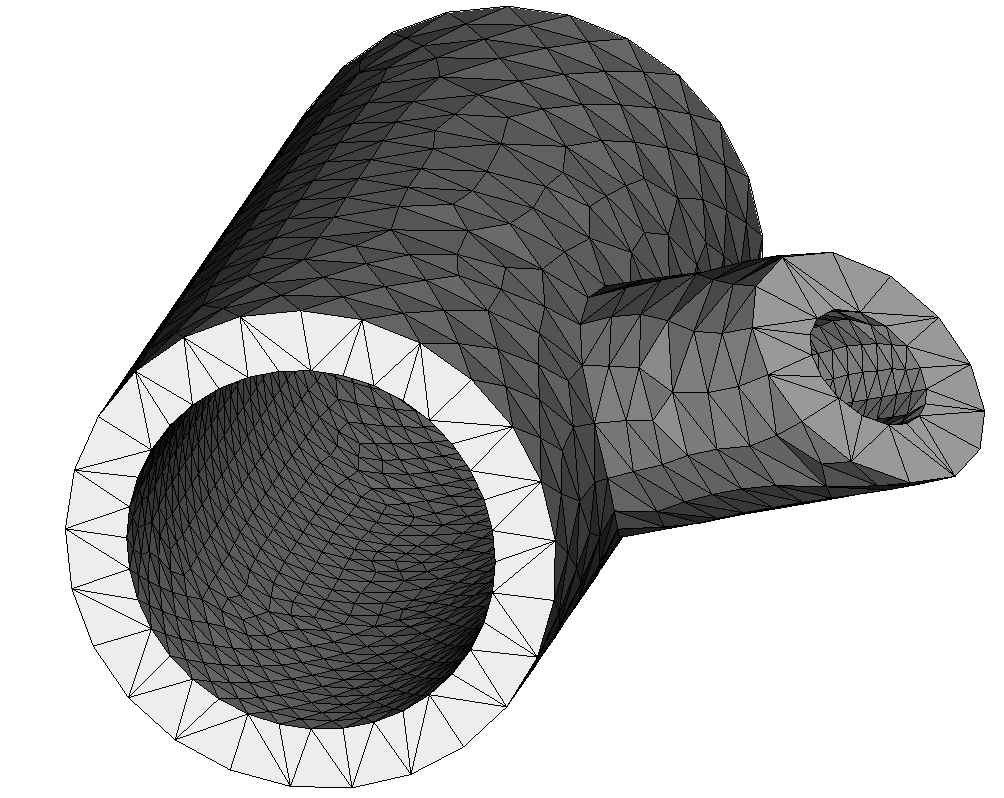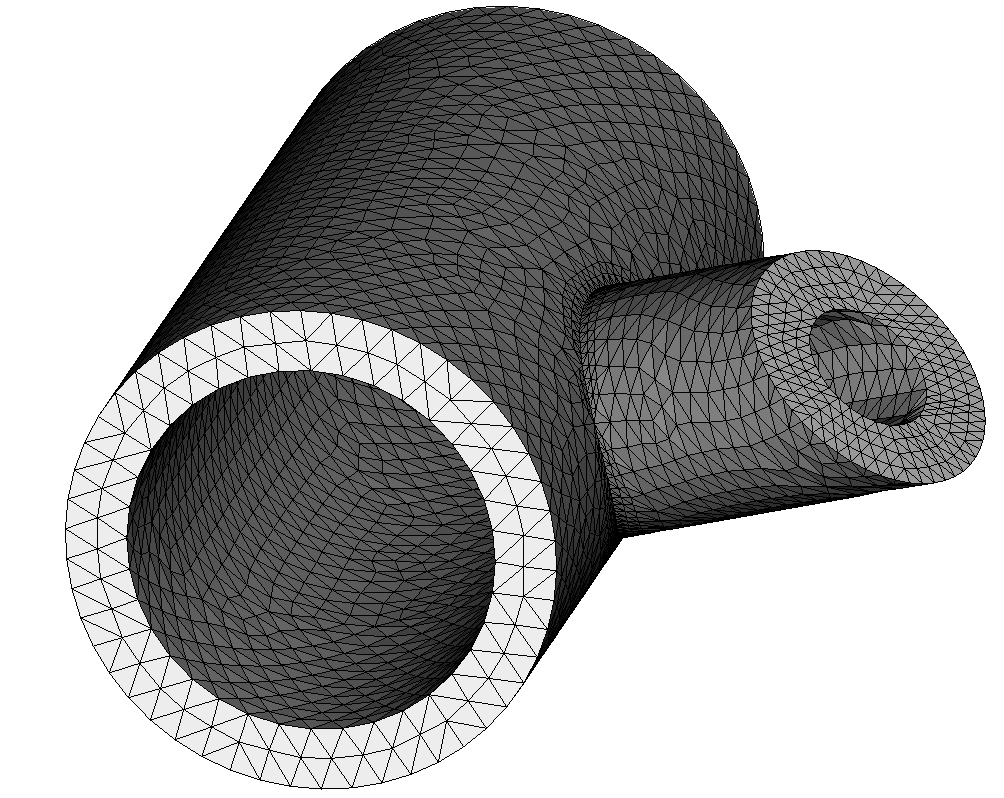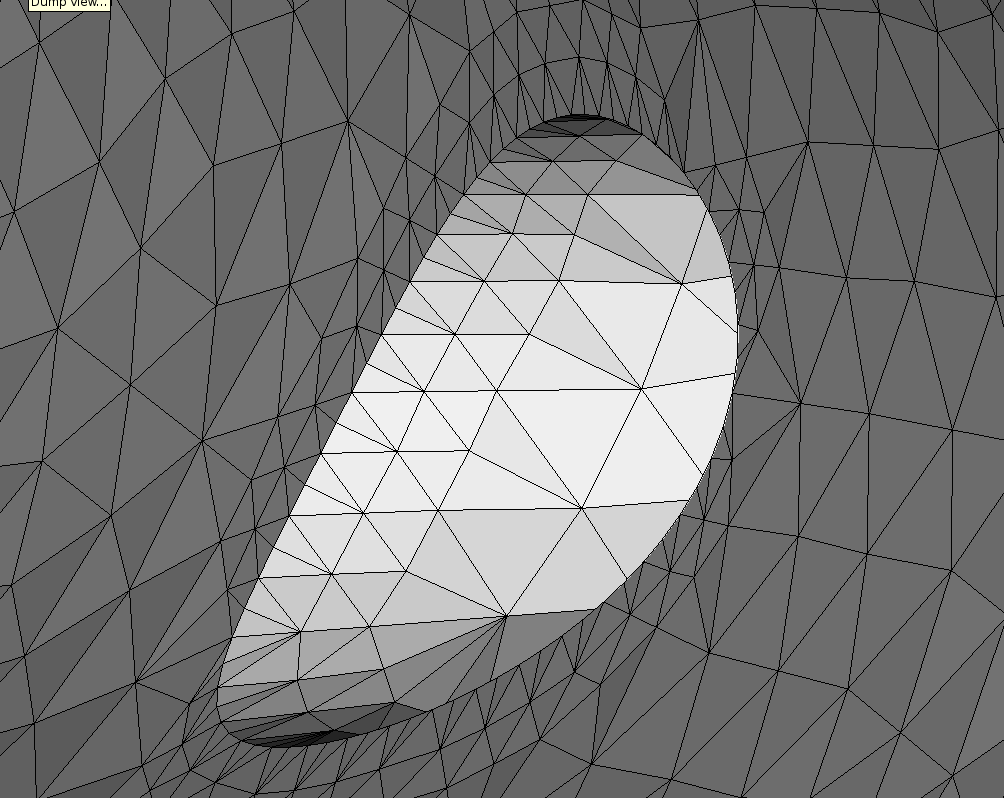4. Summary of results#
4.1. Adaptation No. 1#
The transition from the initial mesh to mesh No. 1 is obtained by systematically cutting out all the triangles on the internal faces of the pipes. It can be seen that the support for these internal faces remains cylindrical.

Figure 4.1-1 .: Mesh No. 1
4.2. Adaptation No. 2#
The transition from mesh No. 1 to mesh No. 2 is obtained by systematically cutting out all the triangles on the external faces of the pipes. It can be seen that the support for these external faces remains cylindrical.

Figure 4.2-1 .: Mesh No. 2
4.3. Adaptations No. 3 and No. 4#
The transition from mesh No. 2 to mesh No. 3, then from mesh No. 3 to mesh No. 4, is obtained by systematically cutting all the segments of the lines of the intersection between the 2 pipes. The refinement of the description of the intersection is increasing.

Figure 4.3-1 .: Mesh No. 4

Figure 4.3-2 .: Mesh #4 — interior detail